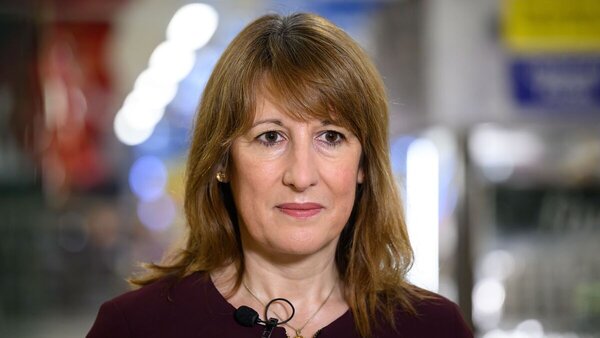All You Need to Know About Payments on Account

All You Need to Know About Payments on Account
Payments on Account (PoA) are advance payments towards your tax bill if you are self-employed or have other income that isn't taxed at source. Understanding these payments can help you manage your finances better and avoid unexpected large tax bills. The PoA system ensures that you pay your tax in regular instalments throughout the year.
The Payments on Account are broadly calculated on the assumption that your income for the coming tax year will be similar to the previous year. This system can be immensely helpful in spreading the cost of your tax bill. However, it can also lead to confusion and unnecessary financial strain if not managed correctly.
Timely and accurate management of your PoA is crucial for preventing penalties and interest charges. Luckily, you can conveniently handle this with the Pie Tax App, which offers intuitive features and expert tax assistants to ensure you stay compliant and efficient.
What Are Payments on Account?
Payments on Account are essentially advance payments on your tax bill, designed to reduce the burden of a lump sum payment at the end of the year. They typically occur in two instalments: one in January and another in July. Each payment is half the total tax due for the previous year. For example, if your tax bill for 2022/2023 was £2,000, you'll generally need to make two payments of £1,000 each in the following year.


Who Needs to Make Payments on Account?
If your last Self-Assessment tax bill was more than £1,000, and less than 80% of your tax was collected at source (such as through PAYE for employment or pension income), you are required to make Payments on Account. This mechanism ensures that larger tax liabilities are paid in a manageable manner throughout the tax year, helping you avoid the stress and pitfalls of a year-end lump sum payment.

In 2022, approximately 5.6 million Self-Assessment taxpayers were required to make Payments on Account. This figure highlights the importance of understanding and managing PoA effectively. The total value of Payments on Account for the 2021/2022 tax year was estimated to be around £9 billion showing the significant role PoA plays in the UK tax system.Latest Payment Statistics

Around 85% of due Payments on Account were made on time in 2022, showcasing a high compliance rate among taxpayers. Late PoA submissions in 2021 accounted for just under £1 billion in interest and penalties, emphasising the need for timely payments.Payment Compliance Rates

How Are Payments Calculated?
Payments on Account are calculated based on your previous year's tax bill. If your tax bill for 2022/2023 was £2,000, you would generally make two payments of £1,000 each for the following year. This system works on the assumption that your tax liability for the coming year will be similar to the previous year.
First, check your Self-Assessment tax return for the previous year to find the total tax due. Divide this amount by two to get the amount you need to pay for each PoA instalment. This helps spread the cost and ensures that your tax obligations are met throughout the year, rather than facing a significant lump sum payment at the end of January.
Adjusting Payments
If you believe your income will be significantly lower in the current tax year, you can request to reduce your Payments on Account. This adjustment can help ease your financial burden and prevent overpayment. Conversely, if your income increases, you may need to pay an additional balancing payment by 31 January.
Always consult with a tax expert or use the Pie Tax App to get accurate estimations and make adjustments as needed. Failing to manage your PoA properly can lead to penalties and interest charges, so stay on top of these payments for smoother financial planning.

Useful Tips for Payments on Account

Keep Records Updated Always maintain up-to-date records of your income and expenses. This will make it easier to forecast your tax bill and manage your Payments on Account.

Set Reminders Set reminders a few weeks before the payment deadlines (31 January and 31 July). This will ensure that you avoid any last-minute rush and potential penalties for late payments.

Seek Expert Advice Use the Pie Tax App to access expert tax assistants who can guide you through the process, manage your payments, and even help you apply for reduced payments if applicable.

Fun Fact About POA
Did you know? Nearly 90% of self-employed individuals in the UK have to deal with Payments on Account at some point in their careers, making it a common but essential aspect of tax planning.
Managing Payments on Account

To manage your Payments on Account efficiently, always start by keeping accurate financial records. This will help you estimate your tax liabilities more reliably. The Pie Tax App offers features to help you track income and expenses automatically, making the process smoother.
Secondly, planning is key. Set aside a portion of your income each month to cover your PoA. This way, you won't face a financial crunch when the payment deadlines approach. Using the app can also provide reminders and updates to keep you on track, ensuring that your tax obligations are met in a timely manner.

Accurate record keeping is essential for effective tax management. Always maintain a detailed log of your income, expenses, and any tax payments made. This will help in calculating accurate Payments on Account. The Pie Tax App simplifies this by offering automatic tracking and categorisation of your expenses and income. This way, you can have an up-to-date view of your financial standing and plan your tax payments more efficiently.Record Keeping

To avoid any last-minute financial stress, always plan for your Payments on Account. Set monthly savings goals to ensure you have enough funds to cover these payments, and regularly review your financial status. Using features like the budgeting tools available on the Pie Tax App can help you set aside the right amount each month. This approach not only ensures timely payments but also helps in better financial planning for the year.Planning Ahead
Summary
Understanding and managing Payments on Account is crucial for anyone in the UK who is self-employed or has untaxed income. The advance payment system helps spread tax costs throughout the year, making financial planning easier. You can calculate these payments based on your previous year's tax bill and adjust them if your income changes.
Effective management involves accurate record-keeping, timely payments, and planning ahead. The Pie Tax App can be an invaluable tool to ensure you meet your tax obligations efficiently. With expert tax assistants and seamless features, the app makes the entire process more straightforward, keeping you compliant and financially sound.
Frequently Asked Questions
What are Payments on Account?
Payments on Account are advance tax payments made twice a year by self-assessment taxpayers. They help spread the cost of the annual tax bill.
When are Payments on Account due?
Payments are due in two instalments: 31 January and 31 July each year. These payments are based on your previous year's tax liability.
Can Payments on Account be adjusted?
Yes, if you expect a lower income, you can request to reduce your payments. Consult the Pie Tax App for accurate adjustments.
What happens if I miss a Payment on Account deadline?
Missing a deadline can result in interest charges and penalties. The Pie Tax App can help you set reminders to avoid late payments
Do all self-assessment taxpayers need to make Payments on Account?
Only those whose last tax bill exceeded £1,000 and had less than 80% of their tax collected at source need to make these payments.











